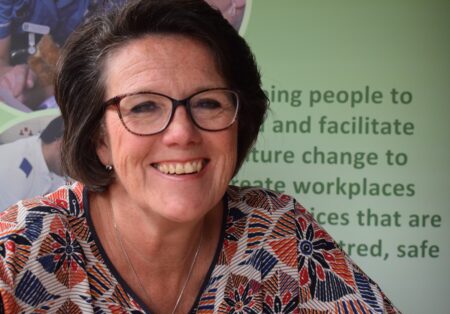Home News & Views Time to invest, connecting and finding belonging in our teams at work
Time to invest, connecting and finding belonging in our teams at work

Jo Odell, FoNS Practice Development Facilitator
I have been following the work of Michael West at the King’s Fund for some time, as the values of his work are very much aligned with the work of FoNS in terms of investing in people. I was therefore interested to attend (virtually) a seminar led by him and Don Berwick, amongst others, last week called ‘Tackling clinical burnout a personal, national and global crisis’. You can listen to the whole recording here.
There was some interesting discussion about why, despite evidence to say that good staff experience and wellbeing are intrinsically linked to increased productivity and good patient experience and outcomes, are organisations are not focusing on their staff? This is even more worrying in the light of the tremendous shortages of nurses and doctors across much of the health and social care sector and the significant cost of sickness absence rates (read more in Michael’s March blog). It was suggested that clinicians are caught up in ‘a vicious circle and have chronic excessive workloads’ which means it’s hard to find time out or ‘headspace’ for personal development, reflection and working together as a team. It was also acknowledged that it takes courage to stop and value the importance of investing in this time. Indeed, I find it’s often a challenge for the Inspire Improvement Fellows to have the courage to ask for and justify time out.
One of the key aspects of the Inspire Improvement Fellowship is for fellows to work with their teams to look at their workplace culture or ‘the way things are done round here’. To achieve this, they need to create time for themselves to step back from their very busy clinical areas and view their own practice, as well as the team’s, with a ‘fresh set of eyes’. They also need to create time for their teams to look at the ways they are working collectively. So how have the fellows done this? Well each fellow has worked creatively to see what is possible.
Some examples:
- Asking staff ‘what’s it like to work round here’ using displays and posters that people can contribute to while on duty
- Holding a team lunch where everyone sits down and eats socially and spends time connecting individually
- Holding a rolling 2 hours workshop to allow everyone to take time out in small groups to look at their vision for a ward area and then identify the gaps and solutions to develop a collective action plan
- Using team meetings or other established regular collective spaces differently. For example, during a safety huddle, spend a bit longer to get to know each other, your key strengths and how that will enable you to work better that shift
- Holding a whole team away day and connecting with senior staff members to provide leadership and patient care in their absence. Consider buddying up with another ward and providing reciprocal cover
So, what have the results been when staff have had time invested in them? In my experience staff feel appreciated, they have an opportunity to connect with each other on a person-centred level and they start to understand what their contribution to the team effort is, which can bring a sense of belonging and a meaning to what everyone is trying to achieve. They can collectively contribute their ideas, experiences and strengths to improve the way the team works and cares for people.
Now is the time to invest in people to ‘release their energies’ as Don Berwick put it, to support clinical leaders to be courageous, to create the time and to encourage conditions for people to flourish in their work. Fixing and using a model of ‘command and control’ isn’t working.
We’d love to hear how you ‘invest in people’ and what results you have seen.
Comments are closed.

